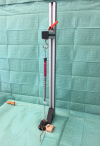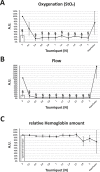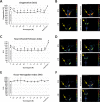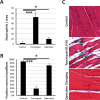An optimized low-pressure tourniquet murine hind limb ischemia reperfusion model: Inducing acute ischemia reperfusion injury in C57BL/6 wild type mice
- PMID: 30677066
- PMCID: PMC6345480
- DOI: 10.1371/journal.pone.0210961
An optimized low-pressure tourniquet murine hind limb ischemia reperfusion model: Inducing acute ischemia reperfusion injury in C57BL/6 wild type mice
Abstract
Acute ischemia reperfusion injury in skeletal muscle remains an important issue in several fields of regenerative medicine. Thus, a valid model is essential to gain deeper insights into pathophysiological relations and evaluate possible treatment options. While the vascular anatomy of mice regularly prevents sufficient vessel occlusion by invasive methods, there is a multitude of existing models to induce ischemia reperfusion injury without surgical procedures. Since there is no consensus on which model to prefer, this study aims to develop and evaluate a novel, optimized low-pressure tourniquet model. C57BL/6 mice underwent an ischemic procedure by either tourniquet or invasive artery clamping. A sham group served as control. With exception of the sham group, mice underwent 2 hours of ischemia followed by 4 hours of reperfusion. Groups were compared using microcirculatory and spectroscopic measurements, distinctions in tissue edema, histological and immunohistochemical analyses. Both procedures led to a significant decrease in tissue blood flow (- 97% vs. - 86%) and oxygenation (- 87% vs. - 75%) with a superiority of the low-pressure tourniquet. Tissue edema in the tourniquet cohort was significantly increased (+ 59%), while the increase in the clamping cohort was non-significant (+ 7%). Haematoxylin Eosin staining showed significantly more impaired muscle fibers in the tourniquet group (+ 77 p.p. vs. + 11 p.p.) and increased neutrophil infiltration/ROI (+ 51 vs. + 8). Immunofluorescence demonstrated an equal increase of p38 in both groups (7-fold vs. 8-fold), while the increase in apoptotic markers (Caspase-3, 3-Nitrotyrosine, 4-Hydroxynonenal) was significantly higher in the tourniquet group. The low-pressure tourniquet has been proven to produce reproducible and thus reliable ischemia reperfusion injury. In addition, significantly less force was needed than previously stated. It is therefore an important instrument for studying the pathophysiology of ischemia reperfusion injury and for the development of prophylactic as well as therapeutic interventions.
Conflict of interest statement
The authors have declared that no competing interests exist.
Figures






Similar articles
-
Ischemic preconditioning prevents skeletal muscle tissue injury, but not nerve lesion upon tourniquet-induced ischemia.J Trauma. 2007 Oct;63(4):788-97. doi: 10.1097/01.ta.0000240440.85673.fc. J Trauma. 2007. PMID: 18090007
-
A comparison of acute mouse hindlimb injuries between tourniquet- and femoral artery ligation-induced ischemia-reperfusion.Injury. 2021 Nov;52(11):3217-3226. doi: 10.1016/j.injury.2021.09.002. Epub 2021 Sep 9. Injury. 2021. PMID: 34544588
-
A noninvasive murine model of hind limb ischemia-reperfusion injury.J Surg Res. 2004 Jan;116(1):55-63. doi: 10.1016/s0022-4804(03)00232-4. J Surg Res. 2004. PMID: 14732349
-
[Novel findings from an animal tourniquet shock model].Nihon Hoigaku Zasshi. 2003 Sep;57(2):125-34. Nihon Hoigaku Zasshi. 2003. PMID: 14574964 Review. Japanese.
-
[Pneumatic tourniquets in orthopedics].Ann Fr Anesth Reanim. 1996;15(2):162-78. doi: 10.1016/0750-7658(96)85038-6. Ann Fr Anesth Reanim. 1996. PMID: 8734236 Review. French.
Cited by
-
Lyophilized Extracellular Vesicles from Adipose-Derived Stem Cells Increase Muscle Reperfusion but Degrade Muscle Structural Proteins in a Mouse Model of Hindlimb Ischemia-Reperfusion Injury.Cells. 2023 Feb 9;12(4):557. doi: 10.3390/cells12040557. Cells. 2023. PMID: 36831224 Free PMC article.
-
Reperfusion Interval as a Prevention of Lung Injury Due to Limb Ischemia-Reperfusion After Application of Tourniquet in Murine Experimental Study.Indian J Orthop. 2020 Apr 7;54(5):704-710. doi: 10.1007/s43465-020-00100-y. eCollection 2020 Sep. Indian J Orthop. 2020. PMID: 32850036 Free PMC article.
-
Effects of photobiomodulation on different application points and different phases of complex regional pain syndrome type I in the experimental model.Korean J Pain. 2021 Jul 1;34(3):250-261. doi: 10.3344/kjp.2021.34.3.250. Korean J Pain. 2021. PMID: 34193632 Free PMC article.
-
Effects of cyclosporin A pre-treatment combined with etomidate post-treatment on lung injury induced by limb ischemia-reperfusion in rats.J Int Med Res. 2020 Jul;48(7):300060520934627. doi: 10.1177/0300060520934627. J Int Med Res. 2020. PMID: 32674636 Free PMC article.
-
Standardized Pre-clinical Surgical Animal Model Protocol to Investigate the Cellular and Molecular Mechanisms of Ischemic Flap Healing.Biol Proced Online. 2024 Jan 17;26(1):2. doi: 10.1186/s12575-023-00227-w. Biol Proced Online. 2024. PMID: 38229030 Free PMC article.
References
-
- Weiskopf RB, Collard CD, Gelman S. Pathophysiology, Clinical Manifestations, and Prevention of Ischemia–Reperfusion Injury Basic Pathophysiology of Ischemia–Reperfusion Injury. Anesthesiology. 2001;94: 1133–8. - PubMed
MeSH terms
LinkOut - more resources
Full Text Sources
Research Materials

